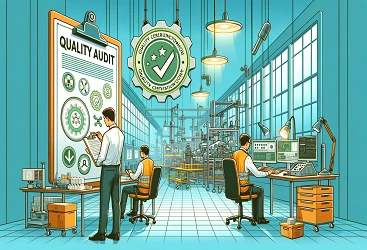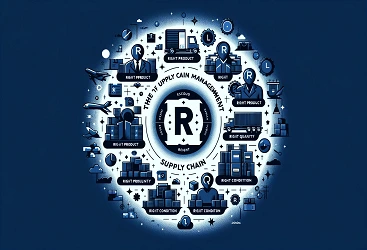What is Quality Audit?
A quality audit is a procedure in which a team of auditors, either internal or external, thoroughly examines a quality system. It is a key component ...
By AMREP | Posted on March 21, 2022
Updated on December 12, 2023

Your company has decided to outsource its production or source components from overseas suppliers. It’s a good approach for increasing profitability and reducing operations costs, but it also means that without careful supplier management, you can run into supplier quality problems. We’ve seen many companies end up with unexpected production and quality management costs because of their unfamiliarity with a different manufacturing environment and their failure to anticipate production risks from overseas suppliers.
Your quality management objective should be to use preventive supplier risk management approaches to avoid these scenarios:
When there are critical product problems and it fails to meet the end user’s need. The product cannot be used at all. These are usually caused by fundamental flaws in the manufacturing processes, components, and materials. It is extremely inconvenient and costly to replace the defective product.
The product fails to meet the customer’s original sample and manufacturing specifications and requirements.
The rejects are too expensive to send back and must be modified in order to reduce manufacturing downtime and waste.
When the quality problems are so severe that the customer has to conduct mass recalls of all the products sold. It may involve the mass replacements of defective parts, a total withdrawal of the product from the market, or the discontinuation of the product line.
Successful supplier quality management is when the buyer has a strong connection with the supplier such that s/he is able to enforce his or her quality and production expectations. Here are some ways you can achieve this:
Find the right supplier through a series of thorough assessments that focus not only on the price but also on the technical, managerial, production, and financial capabilities of the supplier. This is the most critical stage and the overall focus should be on identifying all the potential risks with the supplier.
Perform detailed design, engineering, and manufacturing reviews with the supplier before production begins to ensure that the product design is adapted for manufacturing, the correct manufacturing processes, tools, and materials are used, and that the production teams fully understand the engineering requirements. This also helps to build communication, common understanding, and collaborative work practices between teams.
Get AMREP Supplier Management Services To Avoid Quality Problems
This is essential for ensuring that you are connected to your supplier’s quality. Always remember that the supplier always works for himself or herself, never for you. You need someone who can represent your interests and monitor the supplier’s production. This person should be stationed at critical production and quality control points, for instance, at the incoming materials and first production run stages. This person can provide feedback, pre-emptively identify production risks, and can be instrumental in maintaining a relationship with the supplier.
Ultimately, good planning and constant monitoring of the supplier are the keys to successful manufacturing outcomes. As our CEO always used to say to clients, ‘always plan to succeed, not to fail’.
Contact Us To See What We Can Do
Call Us
Mon - Sat 9.00 - 18.00
Sunday Closed


21 - September 2023
21
September
2023
A quality audit is a procedure in which a team of auditors, either internal or external, thoroughly examines a quality system. It is a key component ...

14 - October 2022
14
October
2022
Supply chain management (SCM) is the process of planning, measuring, and monitoring the flow of goods and services from the suppliers to the end customer...

19 - March 2022
19
March
2022
AMREP Supplier Management Services is back again working in the Defense Electronics industry. Previously our work was on night vision ...
